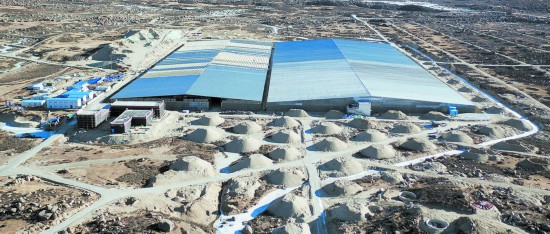China's cosmic ray observatory starts scientific observation


BEIJING -- An observatory for detecting cosmic rays in Southwest China's Sichuan province recently began scientific observation as it launched operation of its first set of detectors, scientists said Saturday.
The project, known as Large High Altitude Air Shower Observatory (LHAASO), is located in the mountains of the eastern Qinghai-Tibet Plateau at an altitude of 4,410 meters.
The main part of the project was launched in 2017 while the whole project is expected to be completed by 2021. During its construction, the project has been put into operation at the same time.
The first set of detectors include a detector array consisting of 1,800 detectors with a sensitive area of 22,500 square meters, two wide-angle Cherenkov telescopes, 180 electromagnetic particle detectors and 80 muon-neutrinos detectors.
Cosmic rays are highly penetrative rays from outer space. As a critical way for mankind to explore the universe, detection of cosmic rays will help decode the origins of the universe, solar activities and the earth's space environment, according to Cao Zhen, chief scientist of the project from China Academy of Sciences.
"From where came the cosmic rays and how they were sped up to the present high energy has been a puzzle for scientists," said Cao. LHAASO will help pinpoint the source of cosmic rays.
The launch of LHAASO's first set of detectors has received attention from global scientists. Scientists from many countries visited the observatory on April 27 and conducted an in-depth discussion on first stage observation targets.
- HKSAR chief executive says to conclude residential complex fire probe within 9 months
- Viral scenic valley in China, not Japan, operators of tourist attraction clarify
- European Chamber Shanghai Chapter calls for stronger EU-China sustainability ties
- Former senior official at State Council body under investigation
- CITIC Group deputy general manager sentenced to life
- Qingdao Port integrates clean energy with China's first hydrogen-electric tugboat




































